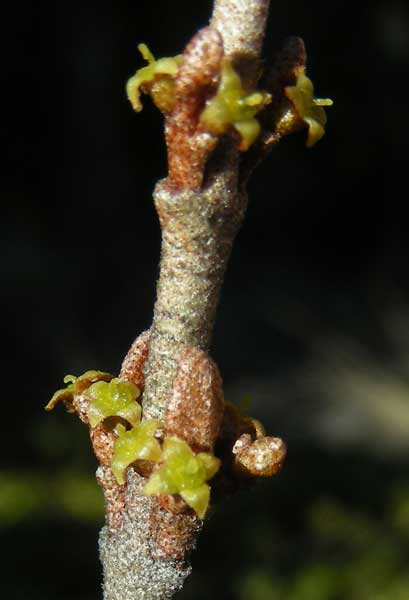Shepherdia canadensis : Soapberry
Taxonomy | Description | Biology | Ecology | Uses | Images | Range Maps
Taxonomy |
Scientific Name:Kingdom: Plantae Division:
Class: Dicoteldonae (two seed-leaves) Family: Elaeagnaceae (Oleaster Family) Genera: Shepherdia (Buffaloberry) (Named for the English botanist, W. Shepherd, 1764-1836.) Species: canadensis (Canadian) English Name(s):Soapberry, Buffaloberry, Canada Buffaloberry First Nation Names:dinjik jak = moose berry |
Description |
Structure:
Leaves:
Reproductive Parts:
Seed:
Not to Be Confused With: |
Biology |
Physiology:
Life Cycle:Seasonal Cycle:
|
Ecology |
Animal Uses:
Habitat:
|
Uses |
Modern:Industrial: Medicinal: Food: Traditional Gwich'in:Folklore: Industrial: Medicinal: Food: Traditional Other:Folklore: Industrial: Medicinal: Food: |
Range Maps |
|
World Range: North American; from NL to AK, south to Great Lakes, SD, NM, and OR.
In Yukon: North to the British Mountains. |








